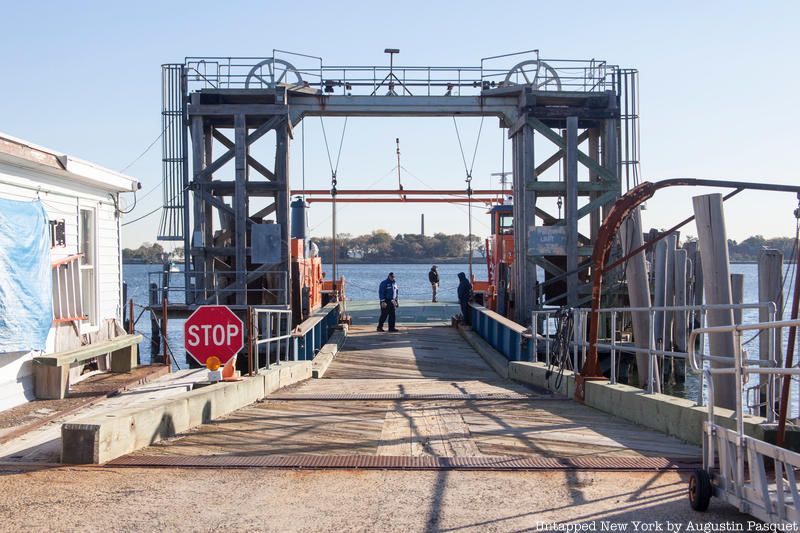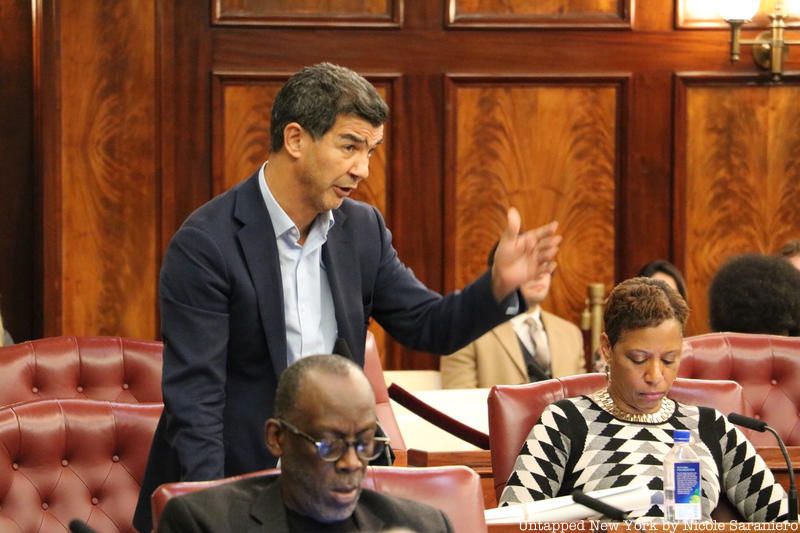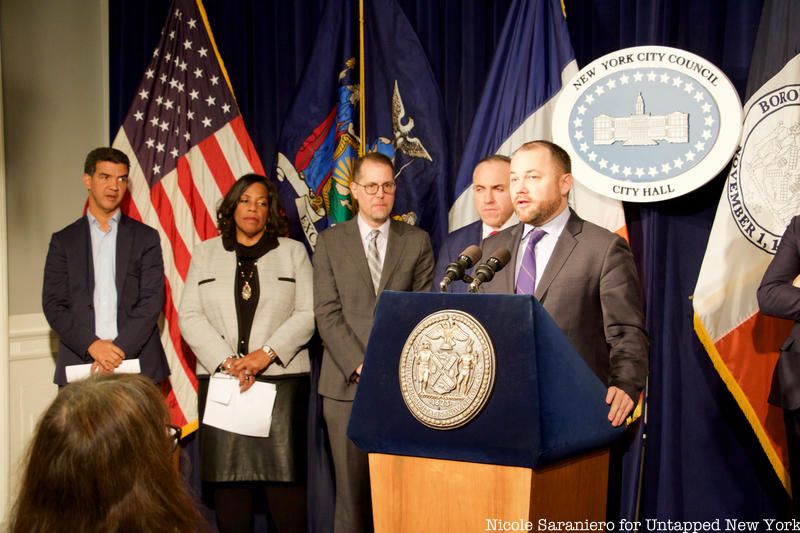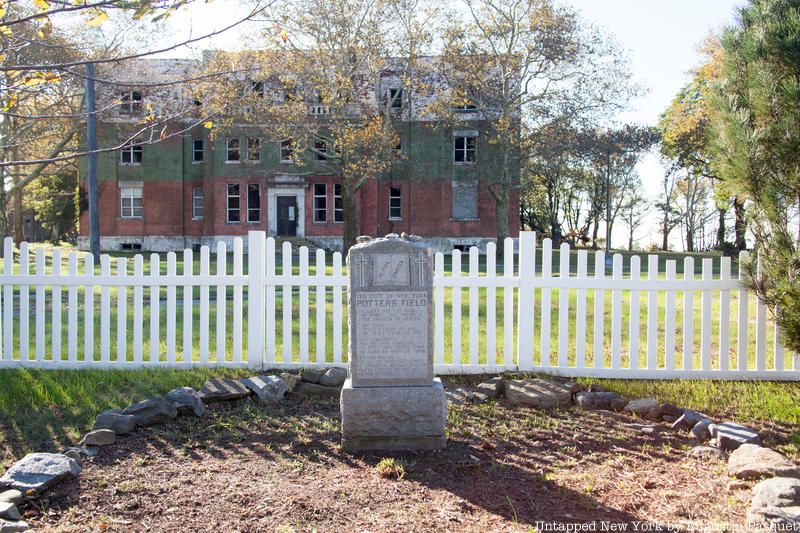Artist-Led Tour of "ENCORE" Photo Exhibit w/ Mark S. Kornbluth
Join photographer Mark S. Kornbluth for a visual exploration of NYC's Broadway theaters at Cavalier Galleries!


“A final resting place should not be run by the Department of Correction, and we’re making that official today,” Speaker Corey Johnson proclaimed at a press conference this afternoon inside City Hall before a vote on legislation concerning the future of Hart Island. Today, a package of legislation was passed to transfer of control of Hart Island, the city’s public burial ground off the coast of the Bronx, from the Department of Corrections to the Department of Parks and Recreation. The jurisdiction of the island has long been a hot button issue. The legislation, which Speaker Johnson called a “revolutionary package of bills,” will radically change the way Hart Island is run, how it is accessed, and how New York City will handle public burials in the future.
Recalling his own visit to the Island last December, Speaker Corey Johnson described the experience as “very moving” but also “sad in many ways.” He described how it was difficult to “see the conditions and how it is really sealed off and closed off from family members and the public who rightfully want to visit the people who have been buried there.” For the public, access has been possible once a month, through a process managed by the Department of Corrections but only family members of the deceased can go beyond a viewing pavilion. Introduction 906-A which passed this afternoon, will transfer jurisdiction from the Department of Corrections to the Department of Parks and Recreation with the intention of making the island more accessible to the public and to the loved ones of those buried there. The burial ground at Hart Island is the largest cemetery of AIDS victims in the world and it is also the largest public cemetery in the nation, with more than one million people buried there since 1869. This bill aims to preserve the Island and make it feel more like a peaceful resting place than a restrictive area. Currently, as it has been historically, Department of Corrections inmates perform the burials, which creates legitimate security concerns for public access.

“The Department of Corrections, the women and men who were working on it were good people and were people that really cared about Hart Island, so this is not an indictment of them,” said Johnson, “but we think this is really anachronistic and it’s time to have a different agency be in charge of Hart Island.” Currently, inmates dig the graves and maintain the island.
Dissent to the bills came from Council member Mark Gjonaj who voted no to all of the Hart Island legislation. Council member Gjonaj expressed concern that the bills did not go far enough to protect the island and its interments, and did not give enough of a voice to the Bronx residents who live near the island or the loved ones of those buried there.
 Council member Ydanis Rodriguez
Council member Ydanis Rodriguez

Speaker Corey Johnson
With the passage of Introduction 909-B, there will be increased public transportation to and from the Island. The bill will require the creation of a plan, either by the Department of Transportation (DOT), or another agency designated by the Mayor, to increase public access to the island via ferry service. The bill will require multiple departure locations and take into account factors such as changing conditions and future uses of the island. The agency must submit a report on its plan a year after the bill becomes effective and posted on the agency’s website.

“To someone, each of these individuals was a child, a parent, a friend or a neighbor,” said Council member Deborah Rose. “The bodies are placed in a pine box, marked by a black marker, and stacked three deep in a trench with up to 160 adults. This is not a dignified burial.” Part of the new legislation package will improve burial assistance for those who can not afford a private burial. Introduction 1559A, sponsored by Council member Rose, will establish an office to provide support to those in need of burial assistance, and Introduction 1580A will require a public hearing convened by the Department of Social Services, the Department of Mental Health and Hygiene and other government stakeholders to discuss policies concerning burial related issues such as finding and notifying next of kin, and burial and cremation assistance, with advocates, families and the general public. The Department of Social Services is required to post a report on the hearing.
“Who is buried there? Immigrants like me. People who couldn’t afford to pay thousands of dollars for a funeral…This is the working class,” Council member Ydanis Rodriguez said of Hart Island. The councilman, who sponsored bill 906A and 909B and worked along with Council Members Elizabeth Crowley, Mark Levin, Deborah Rose, and advocate Melinda Hunt of the Hart Island Project, says this legislation is a step in “writing a new chapter in New York City history.”
Next, check out Haunting New Video on Abandoned Hart Island Brings You Onto NYC’s Public Burial Ground and Behind the Scenes Photos on Hart Island, NYC’s Mass Burial Ground
Subscribe to our newsletter